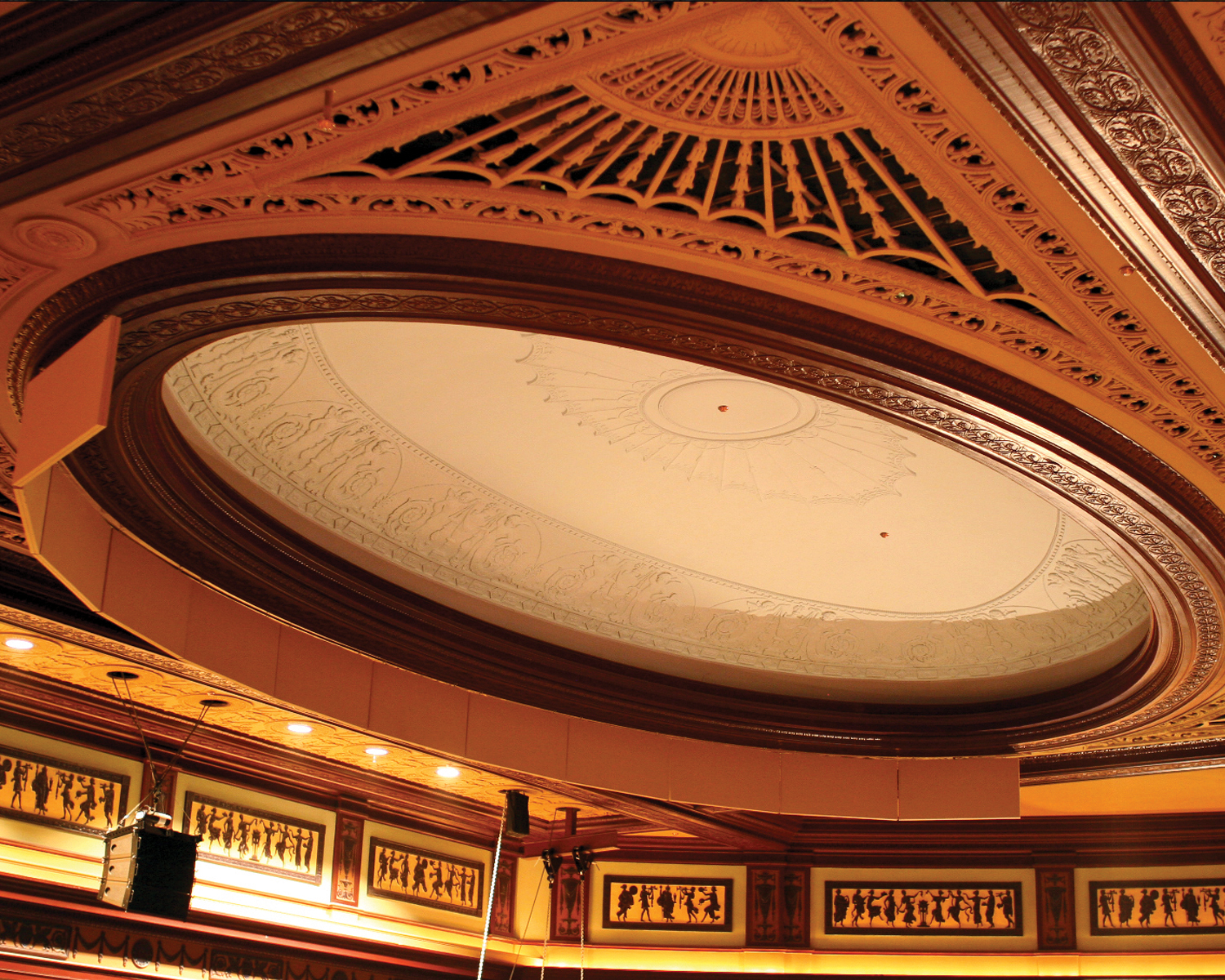
Acoustical Assumptions
For instance, it was once common knowledge that a two-pound weight would fall twice as fast as a one-pound weight, until Galileo tested that assumption by dropping objects and timing their decent. Now it is obvious that just tying two identical weights together will not cause them to drop twice as fast. (For those who may want a more precise statement, there would be some minor variation for air resistance, but most readers will get the point.)
Testing a Theory
At one time most of us in acoustics believed that painting an acoustic panel would decrease its sound (or noise) absorption. Some “experts” still publish that as fact. However, several decades ago this author compared independent laboratory tests disproving this assumption for acoustical foam that was popular at the time. The tests actually showed improved absorption with the painted surface, which was attributed to a marginally better piece of material, not the paint. The key here was not to seal the surface pores or apply paint so thick that it created a hard outer shell.
Sealing the Surface
In some cases open porous surfaces are not necessary as long as they are thin. A thin, flexible vinyl encapsulating a hanging acoustical baffle essentially does not exist acoustically except in the dog whistle range. Conversely, the non-porous surface will, to some extent, increase low frequency sound absorption due to its flexing membrane. This is not to say that it is acceptable to paint a natural acoustical absorber until all pores are thoroughly filled making the surface a smooth shell. We have seen one incident where an old church with great acoustics, partially due to rough-hewn wood, was perceived as needing to be pure white. It was then painted with several coats of enamel to achieve the whiter-than-white finish. Unfortunately, the hall became an echo chamber which required acoustical absorption to be added to get back to where it once was, and still belonged. It is disappointing to the user to fund fixes, rather than allow the acoustician a budget to polish and improve sound.
Means and Materials
Fortunately, there are now means and materials to decorate a room and not destroy its sound. Traditional acoustical wall panels are available in many fabric colors and poly-cylindrical “barrel” sound diffusers may be covered in the same or complimentary fabrics giving a reasonable visual when installed in the usual two-to-one ratio of panels to diffusers. To review why this so often the treatment for large spaces: the fiberglass wall panels in two-inch thickness are fully absorptive at 500 Hz, and above (the speech frequencies) and still have a 0.70 Sound Absorption Coefficient (SAC) at 250 Hz in the mid-bass range. Although named diffusers, the barrel shapes are highly absorptive below 500 Hz and spatial diffusers for the sounds at frequencies above that point, serving “double duty.” In large spaces, temporal diffusers (those that resemble stacks of blocks) are not as effective.
Shapes of Things
Getting back to means and materials, traditional wall panels can be made into shapes and sizes more efficiently with recent advances in CNC (computer numerical control) technology, the same technology that allows guitars to be shaped from a block of wood with a human left to do the polishing and no longer being needed for the initial whittling down. With a CAD drawing furnished to the plant, almost any shape can be made, if it can be drawn. Panels have been cut into shapes of wild animals for museums or images of planets for planetarium theater walls. Planets or puzzle pieces can be made in various colors and interlock to form wall panels in interesting and relevant shapes, other than rectangles. Of course, there are a variety of fabrics that can be substituted for the standard material that every manufacturer uses. The principal concerns are that any fabric be acoustically transparent and synthetic, to limit wrinkles over time.
Painting on Site
Going back to paint, some fabric panels have been field painted on the cloth as artwork. More recently, acoustical panel surfaces are available that resemble drywall. This opens up an even wider range of decorating possibilities, without any concerns over fitting in “acoustical” objects. As mentioned earlier, the thin covering has little effect on acoustical performance and properly applied paint will not degrade acoustical performance. (This is an instance where it is most advisable to read the directions!) The Noise Reduction Coefficient for a standard one-inch acoustical wall panel is NRC=0.80. A properly painted panel (1-1/16″ thick) yields a similar result, NRC=0.85, slightly more due to the thin surface facing.
Ways and Means
These options are available at little or no increase in cost over standard panels.
Where custom fabrics might run over budget, there can be savings by spending where you see it and saving where you don’t. An example of this is where baffles are used in an open truss ceiling and the lights are below. Vinyl encapsulated panels for use above the lights are available at 20% of the cost of acoustical fabric covered ceiling baffles. They meet acoustical performance characteristics and Class A code requirements. The 80% cost savings will go a long way to fund interesting shapes, sizes and colors on the walls where they are seen as well as heard and need to look as good as they sound.
Printing on Site
Printing fabric for panels and direct printing on panels has also advanced over the past decade. Where panel art was once limited by the size constraints of the printer, the opposite is now often the case. Today acoustically transparent fabric can be printed on machines similar to desk top inkjets but very much bigger and wider. Fabric prints can be five yards wide, easily enough to wrap acoustical substrates as large as 4′ X 12′ or 5′ X 10′. In addition, panels may be printed in almost any locality on acoustical board that is pre-wrapped to mimic drywall. This reduces exposure to shipping damage and allows quality to be judged on the spot without delays back-and-forth to the panel fabricator. Pictures can be school logos, sports motifs, or almost any picture in the public domain (or appropriately licensed by the holder of the copyright).
The end result is that years of knowledge have brought us to this point: There is no longer a choice to be made between good looks and good sound.










